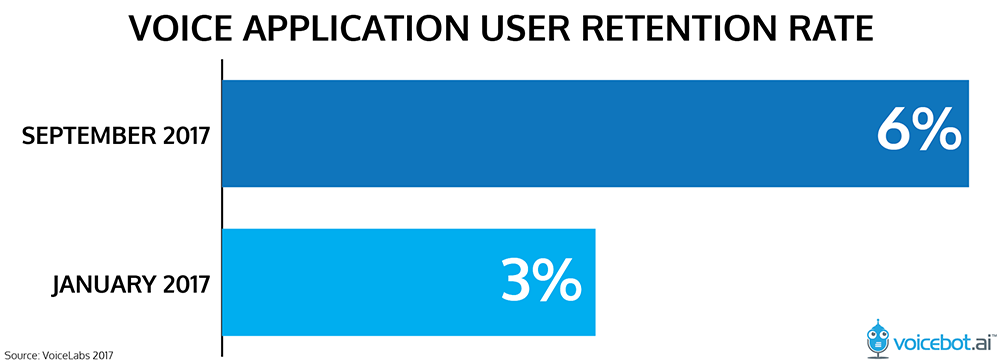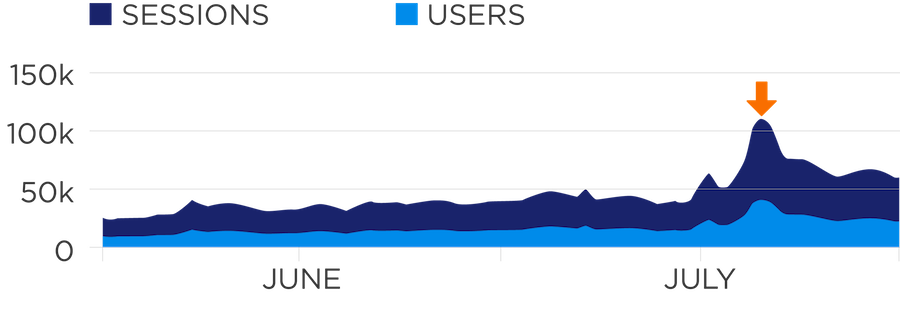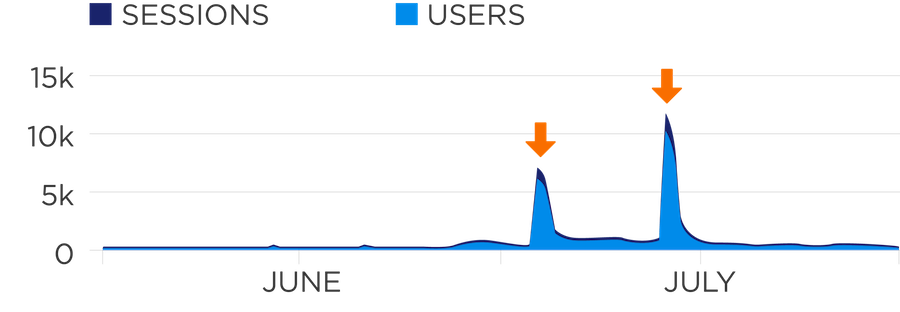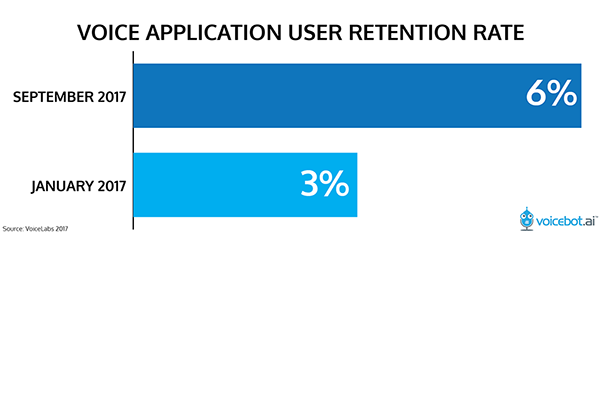Voice App Retention Doubled In 9 Months According to VoiceLabs Data
VoiceLabs released new data today showing that voice app retention has doubled over the past 9-10 months. Voice apps are commonly referred to as Amazon Alexa skills or Google Assistant apps and enable users to access content by speaking. A blog post by Adam Marchick today states:
[In January] when a voice application acquired a user, there was only a 3% chance that user would be active in the second week. We have seen a marked improvement in app retention, with second-week retention now hovering above 6%.

The 3% figure led to a number of foreboding headlines in January. Most of those articles focused on whether Amazon Alexa was a fad and if this low retention was an indicator that usage on the platform was bound to trail off even after a strong holiday sales season for smart speakers. However, none of those fears were realized as the smart speaker market sales have only accelerated. Futuresource indicated 4.2 million smart speakers were sold worldwide in the second quarter alone and the 3.3 million Amazon Echos sold on Prime Day in July foretell an even larger number for Q3 2017.
Alexa Skill and Google Assistant Retention Improves
 Voicebot followed up with Marchick to ask him about the drivers behind this big improvement in user retention for Alexa skills and Google Assistant apps. He commented:
Voicebot followed up with Marchick to ask him about the drivers behind this big improvement in user retention for Alexa skills and Google Assistant apps. He commented:
Over the past year, consumers became more comfortable talking to Alexa and Google Assistant on a regular basis, and asking these assistants for help from third-party voice applications. This adoption combined with marketing has led to voice apps becoming more ingrained in people’s lives. We still have a long way to go, but the trend line is promising.
Marchick brings up an important point. Retention metrics in 2016 and early 2017 were impacted by a number of factors. However, the low numbers clearly didn’t indicate the eventual demise of voice assistants or of voice apps in general. User behavior is still being shaped around these devices and more usage of the platforms will lead to more regular usage of voice apps. In addition, developers have learned more about voice user experience design and that has likely led to better user engagement and retention.
Promotion Tactics Have a Big Impact on Voice App Retention
Marchick lays out two examples in his post that illustrate how promotion can impact user trial. Both exceeded 10,000 monthly active users during the analysis period. However, the retention and weekly average user outcomes look very different.
The first example is a voice app that ran a promotion campaign, saw a spike in usage and then fell back to a higher weekly level of users. Promotion and retention has the intended outcome of more weekly active users (WAU) and monthly active users (MAU). MAU growth of 22% in June was followed by a 58% rise in July with good prospects of maintaining growth in subsequent months.

A second example shows a different story. The promotion drove 2500% MAU growth in June and WAU fell more steeply than the first example but still back to the higher level than pre-promotion. However, a second promotion in July only yielded an 87% MAU lift and a slight WAU decline thereafter.

Marchick intimates that the second example is based on an unsustainable growth strategy. How you promote your voice app and your strategies for retention are critical. It is important to induce trial, but you only drive sustained value from your promotion efforts if users stick around over time. Voicelabs’ Marchick has some further analysis around these findings and some key questions for voice app developers to consider. We suggest you check out the full post here.
62 Percent of Alexa Skills Have No Ratings, But 4 Have Over 1,000
1 Million Alexa Users Now Using Skills Monitored by VoiceLabs









